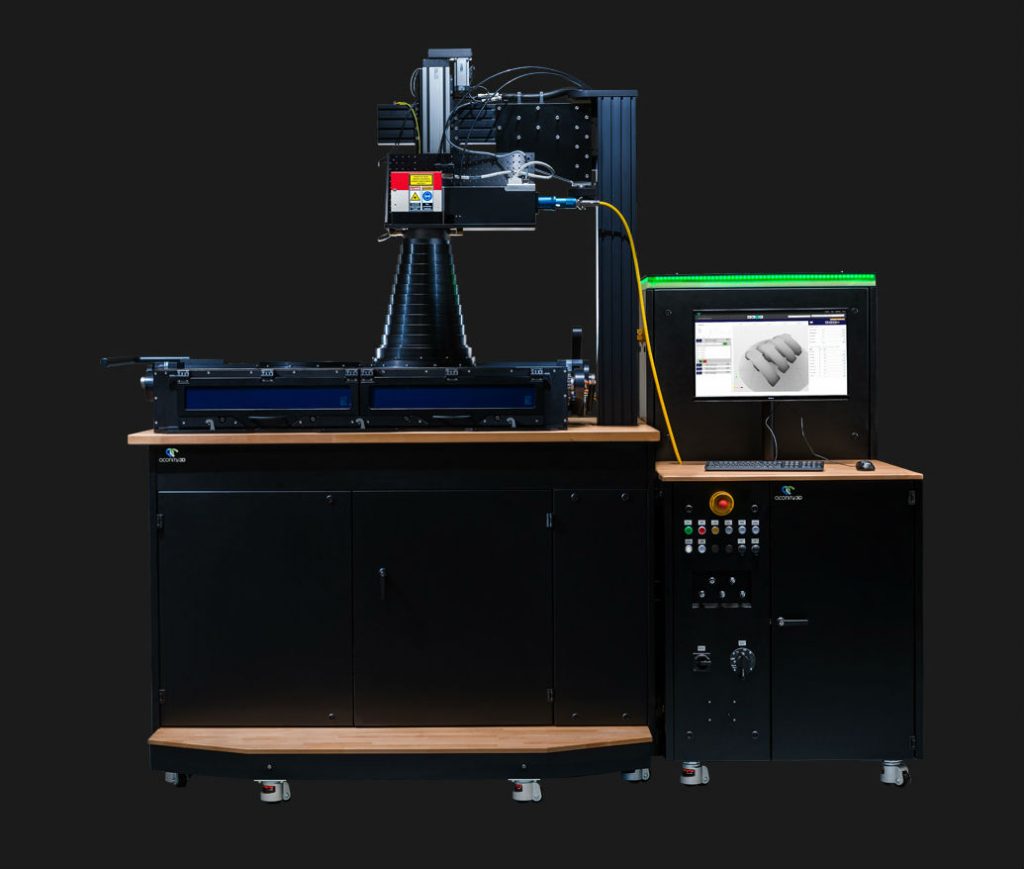Aconity3D, a metal 3D printer manufacturer based in Herzogenrath, Germany, is expanding into the US. A North American headquarters will be established in El Paso under a partnership with the University of Texas (UTEP).
Aconity3D offers a range of modular open-ended machine concepts designed for metal additive manufacturing. The company also offers consulting services and on demand manufacturing.
3D Printing Industry caught up with Yves Hagedorn Managing Director at Aconity3D to learn more about the new venture.
3D Printing Industry: How many Aconity employees will be based in El Paso?
Yves Hagedorn: In the beginning there will only be one employee from Aconity. We hope to be able to hire some more highly trained personnel from UTEP in the very near future to help expanding business and further improve sales and servicing of our US systems.
3D Printing Industry: What markets does Aconity target? Are these primarily metal 3D printers for research purposes?
Yves Hagedorn: Aconity targets the market of metal 3D printers. The high flexibility of the systems has proved to be a major enabler for expanding the current state of the art in this new technology. Therefore, we are currently mainly active in the field of research systems, either for universities or larger corporations. However, the high modularity of the systems allows for providing customer-specific or better industry-specific solutions for series applications such as medical, aerospace, energy or automotive.

3D Printing Industry: Can you tell us about any interesting case studies your customers have developed?
Yves Hagedorn: There are quite a lot of case studies our customers have developed. Some I may share are the following:
– Broad and extensive increase of basic process understanding by simulating the 3D printing process for metals. One enabling factor for this was Aconity’s process monitoring tool, which allows for gathering high speed imaging and extraction of thermal emissivity data, which can be used for backing simulative approaches.
– Processing of Magnesium implants, which are bio-resorbable and vanish after 3 years inside the human body. This is a massive extension to the current state of the art in which implants from bio-resorbable plastics may be applied with the disadvantage of the implants not being able to bear any load. The new approach yields the possibility to build implants which may bear loading and may therefore also be used for fixing broken limbs. Enabler for this technology was the AconityMINI system, which allows for processing materials under a very low oxygen atmosphere and a very strong fume extraction system.
As Magnesium is very prone to oxidation and has its evaporation temperature very close to the melting temperature, resulting in formation of a lot of weld fumes during processing, this was a perfect match. At this point I might point out that our customer was already involved in processing Magnesium and is an expert in 3D printing of metals. So they already know about the dangers of handling and processing Magnesium metal powder and the necessary measures involved with that topic – to my humble opinion one of the main hurdles in processing this very interesting material.
– The capability of ultra high temperature preheating up to 1200 °C allows for a massive extension of the applicable material class. Especially materials which are prone to crack formation due to excessive thermal stresses may be processed with Aconitys’ systems. A showcase of processing Titanium Aluminides, a hybrid material between ceramics and metals – so called cermets – represents a prominent example.
Possible applications are mainly found in the turbomachinery industry such as weight- and load improved fans for turbochargers.
– Another show case is processing of Nickel Titanium alloys, which are also known as shape memory alloys. The open machinery architecture with access to all relevant process parameters represent the main enabling factor for this showcase. Not only were customers able to show that such alloys may be processed completely dense, while showing the shape memory effect, also were customers able to build structures with less than 50 µm wall thickness which represents a world record for powder bed based 3D printing. The latter was enabled by the open architecture of the optics which allows for drastically decreasing the applied spot size while also manipulating further parameters, such as introducing a laser modulation frequency for a reduced energy input.
Possible applications for such micro 3D Printing process of shape memory alloys are stents for the medical sector for instance.

3D Printing Industry: What is next for the company now you have a US HQ, and should we expect further news at IMTS, formnext etc?
Yves Hagedorn: The next steps are expanding our servicing capabilities with in the US – one of our main markets. Furthermore, we will intensify our endeavours in providing modular 3D printing systems for all kinds of different demanding applications. You will of course hear from us at the next formext and possible further marketing possibilities – although we appreciate most customer – to – customer marketing as this underlines the quality of our products and satisfaction of our target group.
You can learn more about Aconity3D here.
Get all the latest 3D printing news direct to your inbox, subscribe to the free 3D Printing Industry newsletter. Also, follow us on Twitter, and like us on Facebook.
Looking for a change of pace? Seeking new talent for your business? Search and post 3D Printing Jobs for opportunities and new talent across engineering, marketing, sales and more.
Featured image shows the Aconity3D team. Photo via Aconity3D.



